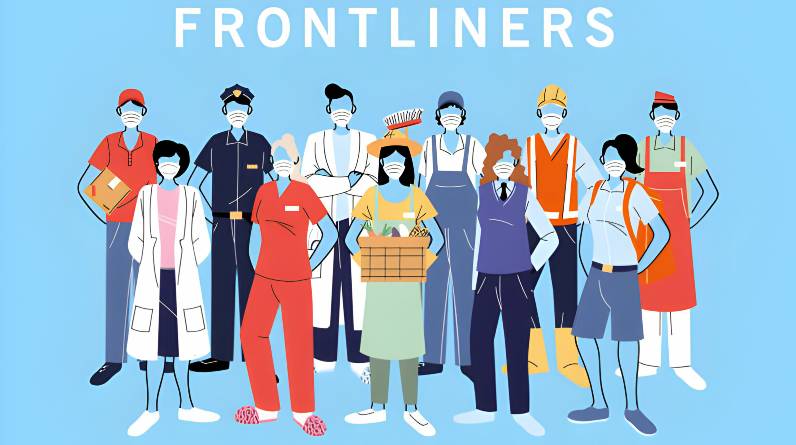
Most people would concur that writing grants is a fulfilling vocation, but selecting which applications will receive funding and which won’t is probably a bit more difficult.
Potential grantees are frequently introduced to you, the grantmaker, through the application process, and vice versa. You can get to know each other better during the application process and decide if their program is the best location for your money to be invested, where it will have the biggest influence on the society or community you support.
You may allocate donations in the most fruitful and significant ways and decide on grants and funding consistently and confidently by using the appropriate criteria when evaluating applications. The following are some grant management solutions to think about while you assess applications.
Experience in Organizations
In assessing organizational experience, take into account the following:
- Has the group already been awarded a grant of this kind and handled the funds properly?
- Has this kind of initiative been started and implemented by the organization before? What effect did it have?
- Do the organization’s executives possess the training and expertise necessary to properly oversee this project and these funds?
- Does the company’s past performance indicate how successful it will be going forward?
Cooperation
Seek out charitable organizations that make use of alliances with advantageous parties, such as public figures, government agencies, other charitable organizations, and for-profit businesses. These partners could help a new program succeed, encourage the nonprofit to explore uncharted areas, offer knowledge and direction, and bring in new partners.
Monetary
A critical component of decision-making is assessing the financial health of the firm. The Statement of Financial Position, also known as the Balance Sheet, the Statement of Activities, also known as the Income Statement, and the Statement of Cash Flows are documents that can provide additional insight into the nonprofit’s financial situation. It should be easy for grantmakers to read through these documents and inquire about specific line items as they come up.
Program Coordination
The funding application should include a description of the program. This program description, which consists of a few phrases outlining the main objectives of the program, should give you all the information you need to assess how well it aligns with the mission, vision, and fundamental values of your foundation.
As you assess alignment, take into account the program’s philanthropic category (as well as your remaining budget in that specific category, if applicable), whether the program’s objectives coincide with those of your foundation and its funders, and whether, based on the information in the application, you think the program can successfully accomplish its objectives.
Method for Assessing Results
Prior to granting funds, it’s critical to understand how the grantee will assess the program’s success and provide you with updates on key performance metrics. Have they disclosed how they intend to track and evaluate results?
Are the program’s objectives and the measures they intend to measure directly related? Will the metrics they’ve chosen show if the program’s objectives have been met? If not, what metrics and how often should they be measured, in your opinion?
Expenses
Examine the application or proposal, keeping the budget in mind. Will your organization’s grant assist the recipient in funding the program? Will your funding be used to launch the program or not? Are the estimated expenses reasonable and as low as possible? Does the initiative effectively utilize cash from donors or foundations?
Fairness
Examine the recipients of the grant as well as the people who will gain from the initiative. Is the target market large or small? Does it benefit the groups of people the foundation has promised to support, such as women, underprivileged people, and members of specific minority groups? Does it fairly serve everyone?
Furthermore, take a look at the application to make sure sufficient measures are in place to inform the program’s beneficiaries of its benefits, keeping in mind that individuals who are most in need frequently have restricted access to digital communications.
As long as a program is serving a specific population and is in line with the foundation’s main goals, it is OK to cater to a limited demographic. For instance, children in foster care may represent a small but extremely vulnerable population.
Want
Consider the following queries regarding need:
- Was the goal of this program to address a legitimate issue?
- Does the issue this program aims to solve exist in our area?
- Exist any other programs, agencies, or organizations that deal with this issue?
- Are those organizations, agencies, or programs fulfilling the need?
- Exist any more financing options to address this need?
Assessing local requirements might assist you in narrowing down your choices from excellent candidates with compelling concepts. Since a program is only as good as the individuals it helps, funding for it requires that a need be established.
Operations
Lastly, there are a few logistical factors that can assist you in assessing an applicant’s quality and projecting their success. A well-written application devoid of typographical errors ought to be more noticeable than one that is messy and riddled with typos. The planning, launching, and implementation of the program will all be executed with the same level of attention to detail as the application process.
Seek out alternate plans and reasonable timeframes. Candidates who have thought about Plans B and C are more likely to stick with the project through difficulties and roadblocks, making sure that the project is completed.
Additionally, make sure the applicant applies for the grant in accordance with the guidelines. Your initial opinion of a potential grantee is formed during the application process, and their aptitude for reading and following directions may give you an idea of how well they will work with others in the future.
Having stated that, when submitting their first grant applications, small organizations and newly established nonprofits are most likely to be rejected. Giving the applicant direct feedback is usually a good option if you want to see improvement in their grant-writing abilities for upcoming cycles and possibilities. You may increase efficiency and transparency by tracking applicants, decisions, and correspondence with the aid of grant management tools.
To put it briefly, writing grants is a fulfilling but difficult profession that involves the difficult task of deciding which applicants will be approved for funding and which will be turned down. Giving applications a thorough examination for need, equity, program alignment, and other factors will enable you to manage donor funds ethically and fairly while making the best choices. Lastly, it is polite and beneficial for applicants who were rejected to receive feedback via grant management systems. Learn more about the grant management software offered by GivingData.






